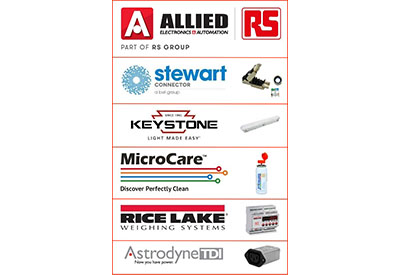Molex Releases Findings of ’Data Center on Wheels’ Global Automotive Survey

March 10, 2022
Molex recently announced the results of a global survey that examines the pace of innovation accelerating the development of next-generation vehicle architectures and driving experiences. While participants expressed optimism over increased adoption of digital technologies, they also identified tough technology, industry and ecosystem challenges that must be overcome to meet demands for vehicles equipped with software, storage, connectivity and computing capabilities—essentially a powerful “data center on wheels.”
“The speed of change across the automotive industry is fast and furious as digital technologies deliver new and more powerful features to fuel the success of next-gen vehicles,” said Mike Bloomgren, SVP, president, Transportation & Industrial Solutions, Molex. “Our latest survey shows strong momentum across the ecosystem amid demands for greater cooperation to reduce design complexities and meet consumer expectations.”
Molex and Mouser commissioned Dimensional Research to conduct The Data Center on Wheels automotive survey in February 2022, polling 519 qualified participants in engineering, R&D, manufacturing, innovation or strategy roles at automotive companies and their suppliers, including Tier 1 or 2 auto-parts suppliers and contract manufacturers. Participants from 30 countries were asked questions to determine which digital technologies are making the biggest impacts on this segment, as well as the toughest obstacles impeding the deployment of advanced vehicle architectures and seamless driving experiences.
Key findings include:
- – 94% of those polled agree that digital technologies create exciting opportunities for vehicle architectures and driving experiences, and will require greater cooperation among stakeholders
- – In less than five years, digital technologies will empower standard new vehicle features, including user interfaces via mobile app (50%), streaming movies and TV (47%), remote enablement of new/add-on features (46%), subscription-model pricing for key features (46%), safety and driver assistance (45%), along with over-the-air software updates (43%).
- – 27% of those polled believe that half of new vehicles sold within 10 years will support Level IV autonomous while 18% believe it will take up to 30 years for Level V to reach that milestone.
Connectivity Drives Biggest Impact
According to 45% of those polled, in-car connectivity has had the most impact on vehicle architectures and driving experiences over the past five years, followed by data storage systems (43%) and cloud computing (43%). In the next five years, immersive UX/UI (39%) and out-of-car connectivity (32%), which encompasses 5G and vehicle-to-everything (V2X) communications, are poised to deliver the biggest gains. Despite the ever-increasing role of connectivity, there was no consensus on primary connection challenges, which included bandwidth (32%), quality of service (28%), coverage (24%) and latency (16%).
Roadblocks to Advancements
In ranking the biggest obstacles to building a data center on wheels, respondents cited cybersecurity (54%), software quality (41%), functional safety (36%), connecting vehicles to the cloud (29%) as well as data storage and analysis (28%). More than two thirds of those surveyed believe software will cause more technology issues than hardware while over half agreed new services across the software ecosystem are needed, spanning operating systems, AI models, functional safety information and more.
Respondents also ranked critical industry issues that could slow adoption, such as consumer fear of autonomous driving (43%), insufficient investments outside vehicles in terms of charging stations and 5G antennas (37%), limited understanding of the potential among auto company leadership (36%) and data privacy (34%). Supply chain shortages also are expected to impact delivery of next-gen vehicles, led by battery availability and chemistry (47%), semiconductor chips (45%), sensors (42%), connector cables and assemblies (40%) and connectors (38%).
Expanded Partner Ecosystems
As automakers incorporate new digital technologies and capabilities into their vehicles, they will need to broaden current partner ecosystems. More than half of the survey participants will look to consumer tech companies (e.g., Apple, Google, etc.), cloud providers (e.g., Amazon/AWS, Microsoft, etc.) and suppliers with specific focus on digital tech for automotive help in enabling new capabilities. Nearly all respondents agree that fulfilling the promise of a data center on wheels demands greater cooperation among OEMs, suppliers and sub-suppliers.
Molex Experience Extends to all Corners of a Data Center on Wheels
For decades, Molex’s role in the automotive industry has been elevated by the company’s heritage in the data center, telecom, networking and consumer electronics industries. Molex continues to further its mission to design and deliver critical electronics, connectivity, high-speed networking, data storage as well as power and signal solutions that form the central nervous system of tomorrow’s next-generation vehicle architectures.
![]()











